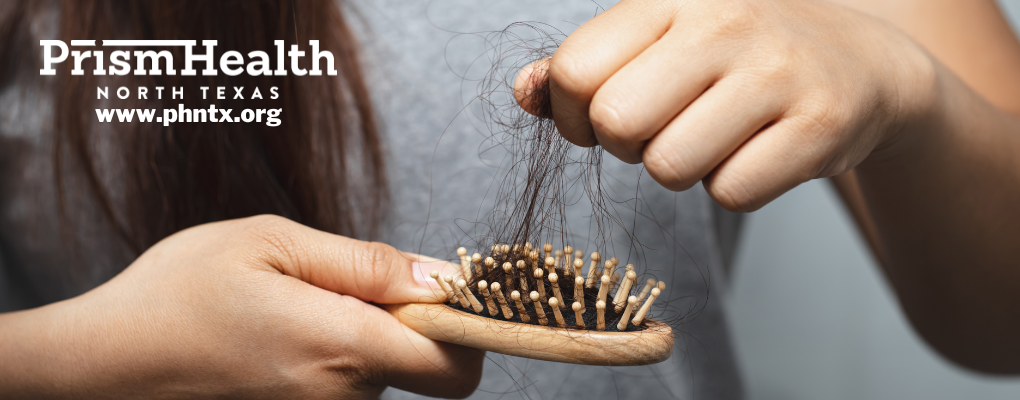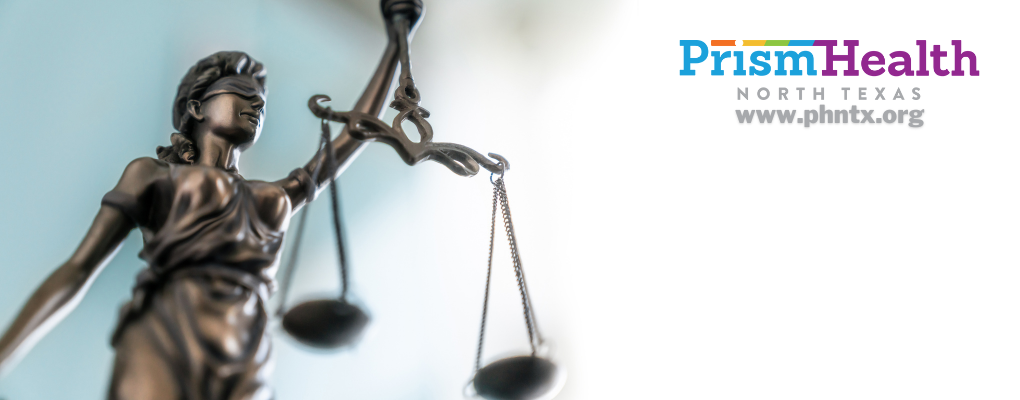
Exploring Natural and Medical Solutions to Hair Loss
Published: 03-15-2024 | 2 MIN READ | Author: Prism Health North Texas
Experiencing hair loss is a common concern affecting 80 million people in the U.S. It affects men and women and can deeply impact a person’s self-esteem and confidence. There are many reasons why a person could be losing their hair including genetics, hormonal changes, stress, or medical conditions. Because there are so many reasons a person could be experiencing hair loss, there are also many solutions a person could try to either stop the process or regrow hair. Here is a look at a few natural and medical solutions that may help you or your loved ones:
Natural Remedies:
- Nutrition: A balanced diet rich in vitamins, minerals, and proteins nourishes hair follicles from within. Replenishing iron, vitamin D, and B12 (among others) can help. You can incorporate these by eating more foods like leafy greens, eggs, nuts, and fish. A healthy diet can supply the essential nutrients you need for healthy hair.
- Scalp Massage: Hair growth can be stimulated through a gentle scalp massage. A scalp massage increases blood circulation to your hair follicles. A scalp massage can also help relieve stress which is a common contributor to hair loss.
- Essential Oils: Adding oils like rosemary, peppermint, and lavender to a scalp massage can help enhance hair growth. Massaging these diluted essential oils onto the scalp can improve blood circulation, strengthen hair follicles, remove dead skin cells, and improve overall scalp health.
- Herbal Remedies: Traditional herbs like aloe vera, ginseng, and saw palmetto have been used for centuries to regrow hair. These herbs reduce the effects of dihydrotestosterone (DHT) which can contribute to hair loss.
- Lifestyle Modifications: Avoiding or reducing harsh styling products and heat treatments are some of the best lifestyle changes you can make to maintain healthy hair. Other steps you can take are getting plenty of sleep and lowering stress levels through meditation, yoga, and other relaxation techniques to help manage stress-related hair loss.
Medical Solutions:
- Topical Treatments: Over-the-counter and prescription solutions like minoxidil (Rogaine) are commonly used to reduce hair thinning. When applied directly to the scalp, minoxidil prolongs the hair growth phase and increases hair follicle size.
- Prescription Medications: Oral medications like finasteride (Propecia) work by inhibiting the conversion of testosterone into DHT. This slows hair loss and promotes regrowth. Please talk with a healthcare provider before taking any prescription medication.
- Platelet-Rich Plasma (PRP) Therapy: PRP is a modern treatment that injects a concentration of blood platelets into the scalp. PRP can stimulate hair follicles to trigger natural hair growth.
- Hair Transplantation: Follicular unit transplantation (FUT) or follicular unit extraction (FUE) are more permanent surgical solutions. These procedures transplant hair follicles from the back and sides of the head (where there is typically more hair growth) to balding or thinning areas on the scalp.
- Low-Level Laser Therapy (LLLT): LLLT is a red-light therapy that can stimulate hair follicles, increase blood flow, and help hair growth. Devices like laser combs or helmets can be used at home or in clinics.
Hair loss can have devastating effects on people, the way they see themselves, and the way they think they are seen by others, however, there are many options to explore. Natural remedies offer approaches that focus on overall well-being and health and medical solutions provide treatments backed by decades of scientific research. There is no one-size-fits-all solution to hair restoration. Consult a healthcare professional for a personalized approach to meet your needs and preferences while on your hair care journey.
Sources:
The Role of Vitamins and Minerals in Hair Loss



